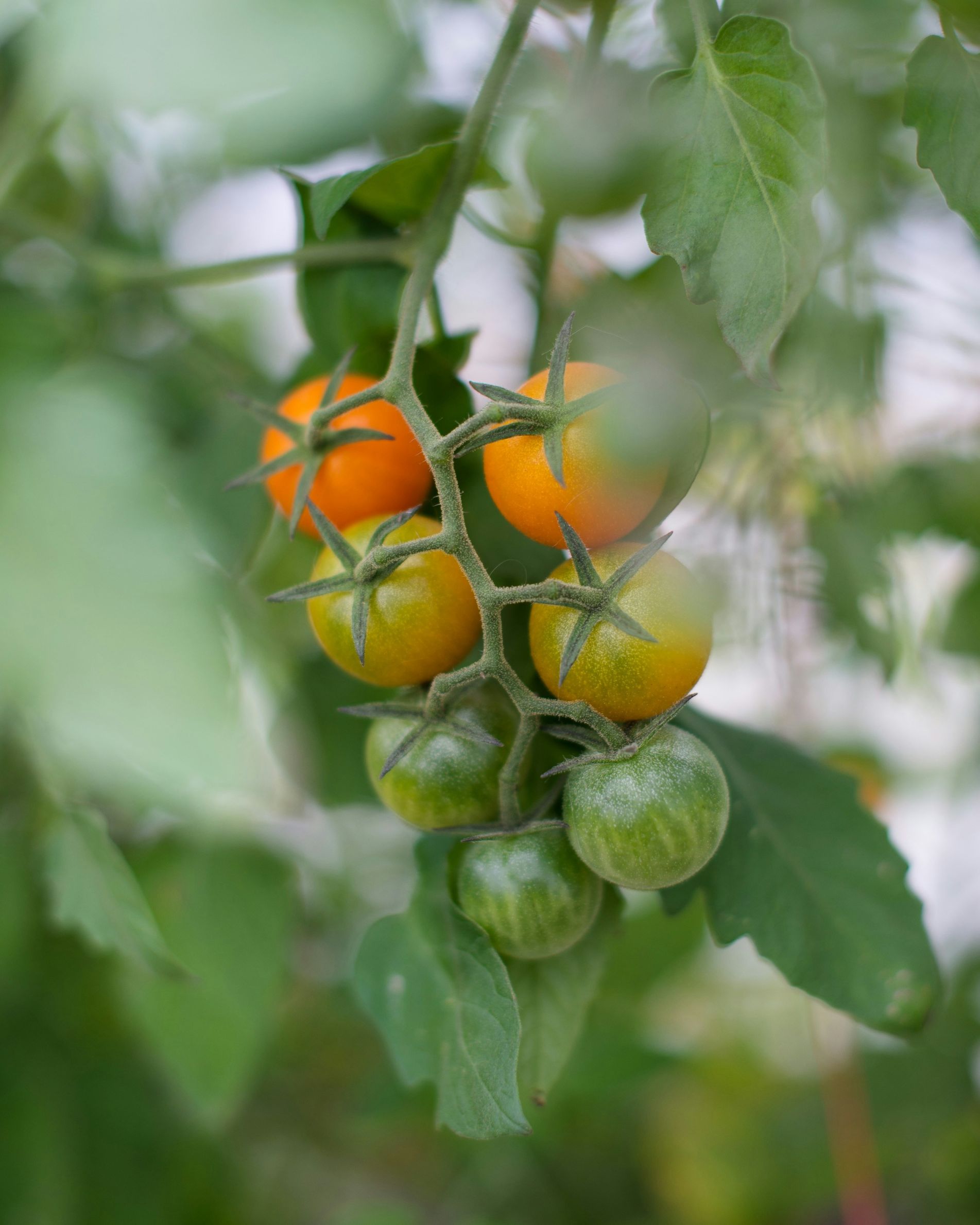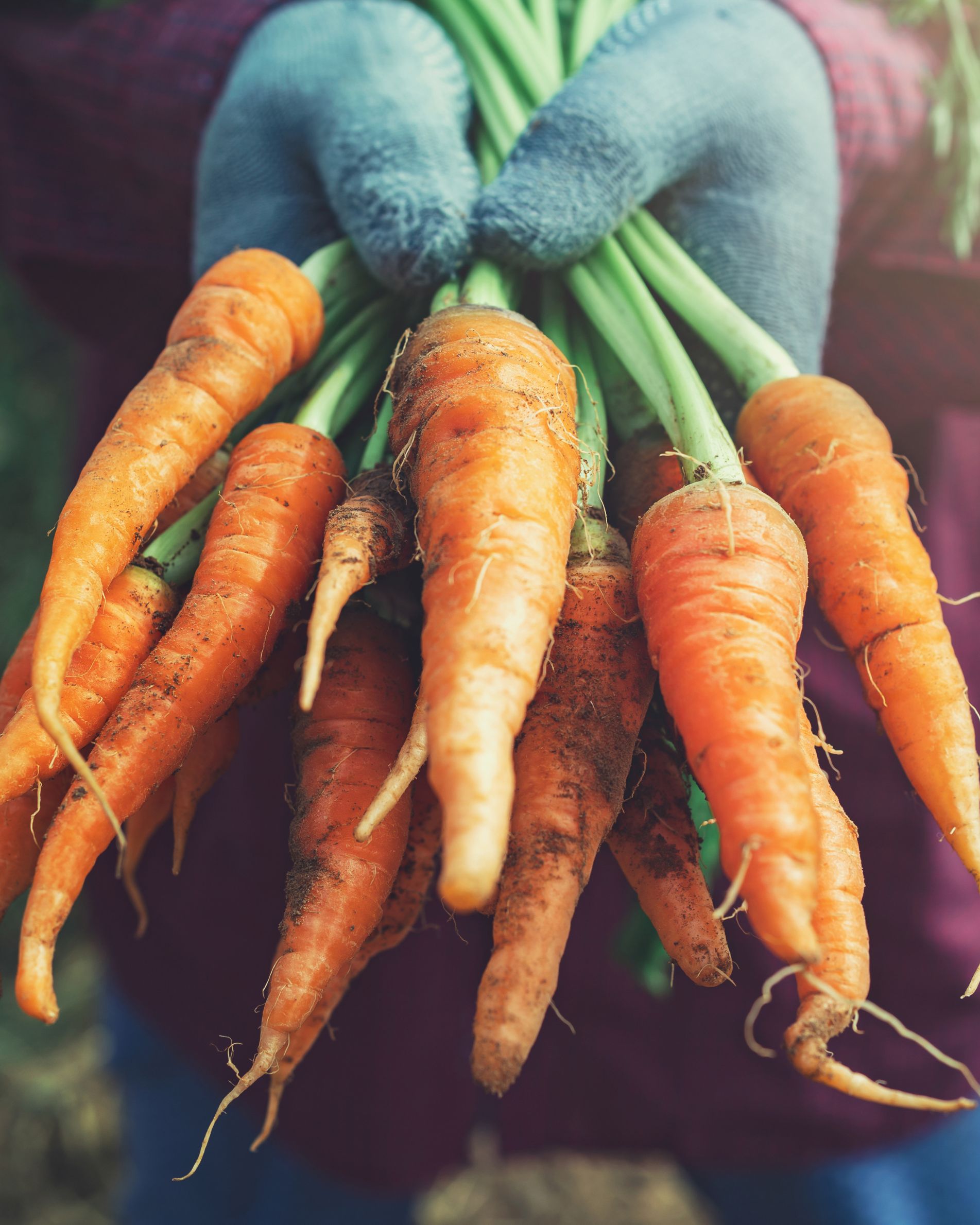
Eleanor Clarke
OUTDOOR PLANTS
How to Grow on Peas
They’re a popular veg to grow and it’s easy to see why. We love them because they’re so sweet fresh from the pod – pick them young and you can pop them straight into salads, raw, and eat the pods too. Toss them through pasta with olive oil and mint, or steam briefly and slather them in butter. They’re not tricky to grow either: you’ll need a sunny spot of soil and some pea sticks and that’s pretty much it.
When to Grow
You can start sowing tough, early varieties of peas, such as ‘Feltham First’ directly outside from February, although they’ll germinate better if you pop a cloche over them. Or some people start them off either in individual root trainer modules, or in sections of guttering in a greenhouse, coldframe or sunny windowsill indoors. Reason being they don’t like having their roots distrurbed, so rather than moving them individually, you can – in theory – slide the whole gutter contents into the veg bed when the weather’s warmed up, in March and April once they’re around 20cm tall. Don’t forget to harden them off first; this means gradually acclimatising them to outdoor temperatures, a few hours at a time..
A Quick Look at the Label
Do you want to grow flat mangetout such as crisp, sweet ‘Delikata’? Or sugar snaps (rounder and sweeter than mangetout with small peas inside) – try ‘Sugar Lace’ for an early crop. These are the simplest types to grow. If you’re after classic podding peas, try early variety ’Kelvedon Wonder’ or ‘Jaguar’ for harvests a little later in the season. Then there are marrowfat peas, which you harvest then dry to use in soups and casseroles. All come in various sizes, from dwarf varieties such as sugar snap ‘Delikett’ that grow to 60cm to giants that reach nearly 2m. Then there are a few varieties that are specifically for growing pea shoots, which are brilliant for growing on a sunny windowsill or patio – or even indoors in seed trays. So plenty to choose from…
Where to Grow
Peas enjoy full sun and good fertile soil (so dig in some well-rotted manure if yours is poor, ideally a few weeks before planting/sowing, so it has time to settle in). You’ll want them around 6cm apart (but follow the instructions on the seed pack), although if you’re just growing for pea shoots, 1-2cm between seeds is perfect.

Support Them
Right after sowing or planting out, put in pea sticks or canes and netting to give something for the pea plants to clamber up. Traditional pea sticks were cut from hazel, but any branched sticks will do, as long as they’re tall enough (check your seed packet as it’ll depend on the variety you’re growing). And dont’ worry about tying them in – although pea tendrils look delicate they hang
on tightly to sticks and netting once they start growing.
If you’re growing for the pea shoots, don’t worry about supports, just keep snipping the new shoots as they grow.
Pinch them Out
From around April, once your peas are around 15cm tall, be brutal and pinch out the growing tips. This will encourage them to branch out and grow stronger, with more side shoots, and eventually more peas. Eat the shoots in a salad or sandwich.
Water
Peas aren’t too needy in terms of water, once they’re growing well. Do water in dry spells though, and give them a good soak when they begin to flower and again when the pods start to develop. It’s important to water regularly when you start to pick the pods, always at the roots, to help ward off powdery mildew.
Keep Picking
If you grow a few different varieties, you could be harvesting peas from June until October. Pick regularly or your plants will stop producing flowers and pods. If you’re just growing for the shoots, snip them at around 15cm tall, leaving a couple of centimetres at the base, then they should resprout.
Common Problems
My seeds haven’t germinated…
The most common reasons for sowing pea seeds then seeing nothing come up are mice, which love pea seeds, and the soil being too cold. Try starting them off under cover next time and plant them out when they’re sturdy seedlings.
The Plants are Covered in a White Dust…
Powdery mildew is a fungal disease that many plants can succumb to, especially if they don’t have enough water, and peas can be susceptible to it. There’s not much you can do, except water at the roots and next time leave a little more space between plants.
Remember, if we don’t have specific plants in stock, just come and ask one of the team. We’ll be happy to suggest an alternative or order it for you, if we can.


